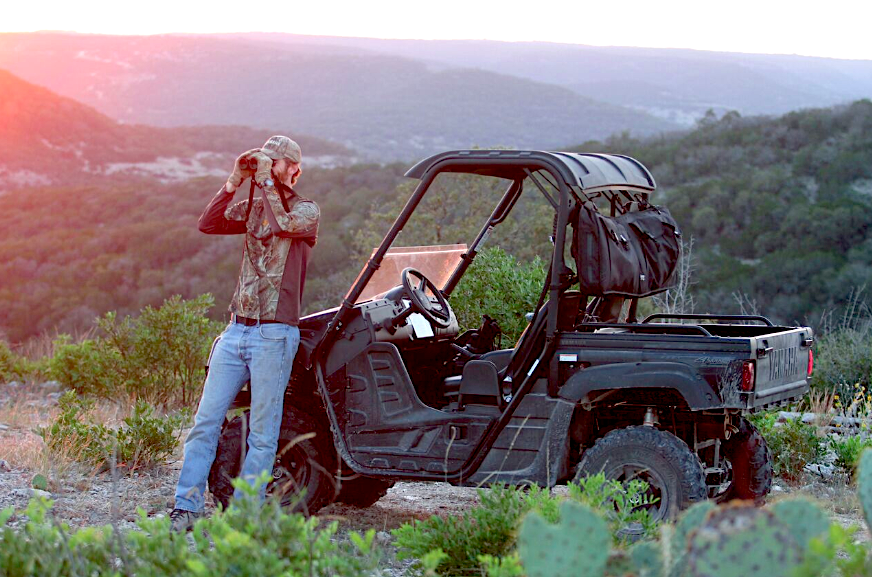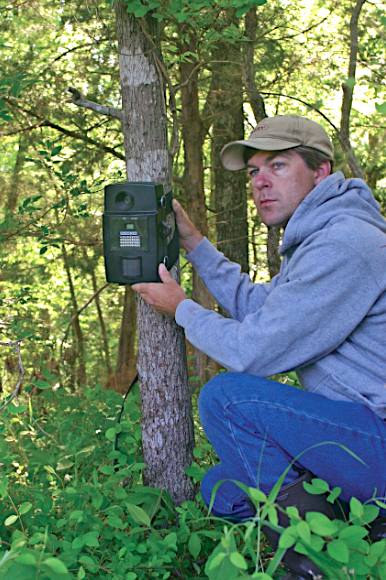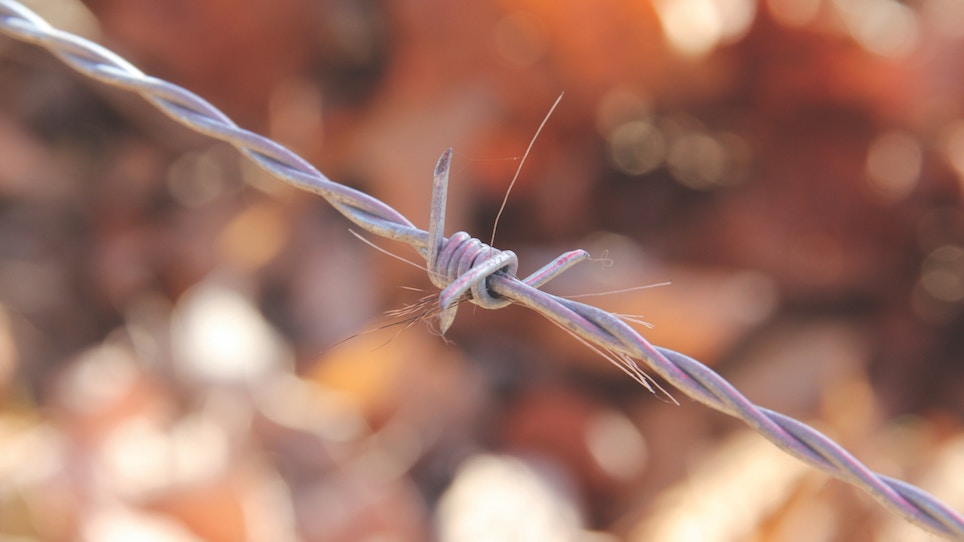Could it be possible that some deer hunters are scouting too much? Is it true that too much time in the woods can blow your cover?
By spending every Saturday in August and September scouring the woods for every track, trail and rub, you are laying down a new layer of human scent and bumping deer from their bedding areas. Despite every scent-masking precaution available, the whitetails in your woods know you have been there. Instead of patterning your deer herd, your deer herd may be patterning you. They may shift to night-time movement, or they may hole up in those pockets of habitat you haven’t walked through. Yet.
Too Much Scouting? There's Never Too Much Scouting!
West Kentucky Whitetails outfitter Tad Ladd firmly believes that it is impossible to scout too much. That’s not because he thinks deer aren’t affected by human presence. Instead, he says there is a difference between a constant presence and an occasional one.

Human presence due to scouting is no different than a farmer working on his fences or feeding his cattle. He is out there all the time and the deer just get used to it. Photo: David Hart
“We are out there all the time working on food plots, checking trail cameras, tending mineral stations and just doing what needs to be done,” says Ladd. “I think deer become accustomed to the constant presence of humans. It’s no different than a farmer working on his fences or feeding his cattle. He is out there all the time and the deer just get used to it.”
Virginia hunter Richard Borden agrees. But since he can't be on the properties he hunts on a near-daily basis, he takes the opposite approach. For him, there is a fine line between being out there all the time and scouting too much.
“I definitely think hitting the woods two or three times a week in the weeks leading up to the season can throw the deer off and make them less likely to move in the daytime,” says Borden, a 52-year-old sales representative. “I also think there is a difference between doing routine stuff like pulling trail camera memory cards once a week and walking around through the woods once a week. One is far more likely to disturb deer than the other.”
It's About How, Not How Much
Scouting, no matter who is doing it, how much they are doing it or where they are doing it, can be good or bad. Borden is thoughtful in his scouting efforts, particularly as the season draws near.

While checking trail cams is OK, be sure to do most of your intrusive scouting in February or March before the summer months. Photo: David Hart
“Am I going to stomp around a known bedding area a week before the season? Definitely not,” he says. “If I need to know something about a particular area close to the season, I might walk field edges and look for tracks or old rubs and scrapes. I might even go into the woods to look for acorns and sign that deer are hitting those acorns, but whatever I do is going to be quick. I’m not going to walk all around. I want the deer as comfortable as possible right up until the season starts.”
He does most of his intrusive scouting well before the season opens, often in February or March. He looks for trails, old rub and scrape lines, anything that might help him find areas bucks like to hang out. He isn’t afraid to jump deer from their beds, either. In fact, he doesn’t mind doing exactly that. That shows him specific bedding locations, although he acknowledges bedding areas can change.
“I’m not worried about messing up their patterns in the late winter. If I leave them alone after that, they have the entire summer to get back to normal,” he says. “I will look around in the late summer, but not much. Again, I just want to know what food sources are out there, especially the acorn crop.”
Likewise, the hunting outfitter Ladd isn’t actually scouring the woods and fields for new deer sign every time he is working on the thousands of acres he hunts. Instead, he is mostly driving or sitting on a tractor. He might stop to check a field edge for tracks, but mostly he's driving to and from mineral sites, food plots and trail cameras, getting out of his truck briefly to do his job.
Ladd is observant, though. He is always scanning the woods and fields for something that might offer a clue for future success.
Like Borden, Ladd isn’t going to walk through known bedding areas and other refuge-type areas in the weeks leading up to the season. He not only doesn’t scout those areas, he doesn’t hunt them, either. For him, the most critical mistake a hunter can make isn’t during the summer. It's during the season itself.
“Hunting a buck when the wind is wrong will do far more damage to your chances of success than scouting too much. I’m convinced deer know when you are a threat and when you aren’t. They know the difference between a farmer walking through the woods or driving across a field and a hunter. I don’t know how they know, but they know,” says Ladd.
History Repeats Itself
Watching deer may be fun and informative, but sometimes there isn’t much point. Nor is there reason to enter the woods prior to opening day. If you’ve hunted a piece of property for years, you likely know every trail, oak flat, escape route and bedding area on that land. Barring any significant changes to the habitat or food sources, there is little reason to believe their activity will be any different than it was last year or the year before that.
“As long as food sources haven’t changed, deer will use the same trails year after year,” says Ladd.
Even if you shoot a mature buck from a food plot or near a bedding area last year, there’s a good chance another buck will fill in the gap. What was good for one quality buck is just as good for the next.
“I’ve hunted one farm since I was a kid. Some stands are always better than others. It’s been that way for as long as I can remember,” says Borden. “I still go look around, but for the most part, I gave up on scouting that property because I know where the deer are going to come from in the morning and where they are going in the evening. It’s been like that for 40 years. Generally speaking, it’s pretty much the same every year.”
Things can change, of course. Oaks that produced a bumper crop of acorns last year may be bone-dry this season. A former cornfield may be planted in grass. That’s why Borden hasn’t given up on scouting on that farm completely. He checks in every so often just to monitor what’s taking place on the landscape.
Mind Games and Information Overload
It’s true that the more time you spend in the woods, the more you learn. Subtle clues that may have not been visible the last time you scouted may be as obvious as a skunk under your treestand the next time you walk through the woods.
Food sources change as the seasons change, too. Your deer herd may shift their daily routines, sending all your previous scouting efforts up in smoke. More information is usually better than less, but is it possible to have too much data? Yep, says Borden. Over-scouting can start to mess with your mind.
“I used to try to cover every square inch of the land I wasn’t familiar with and find every piece of sign I could, but having too much information just made me question all my previous decisions. I would start to doubt my stand locations. One year, I moved stands like four or five times before the season started. In hindsight, I don’t think it mattered,” says Borden. “Any more, I make a pretty fast decision and accept that no matter what I do, it may not be the right decision. That’s part of it. I process what I see on the few scouting trips I take and then follow my gut.”
Featured photo: David Hart






